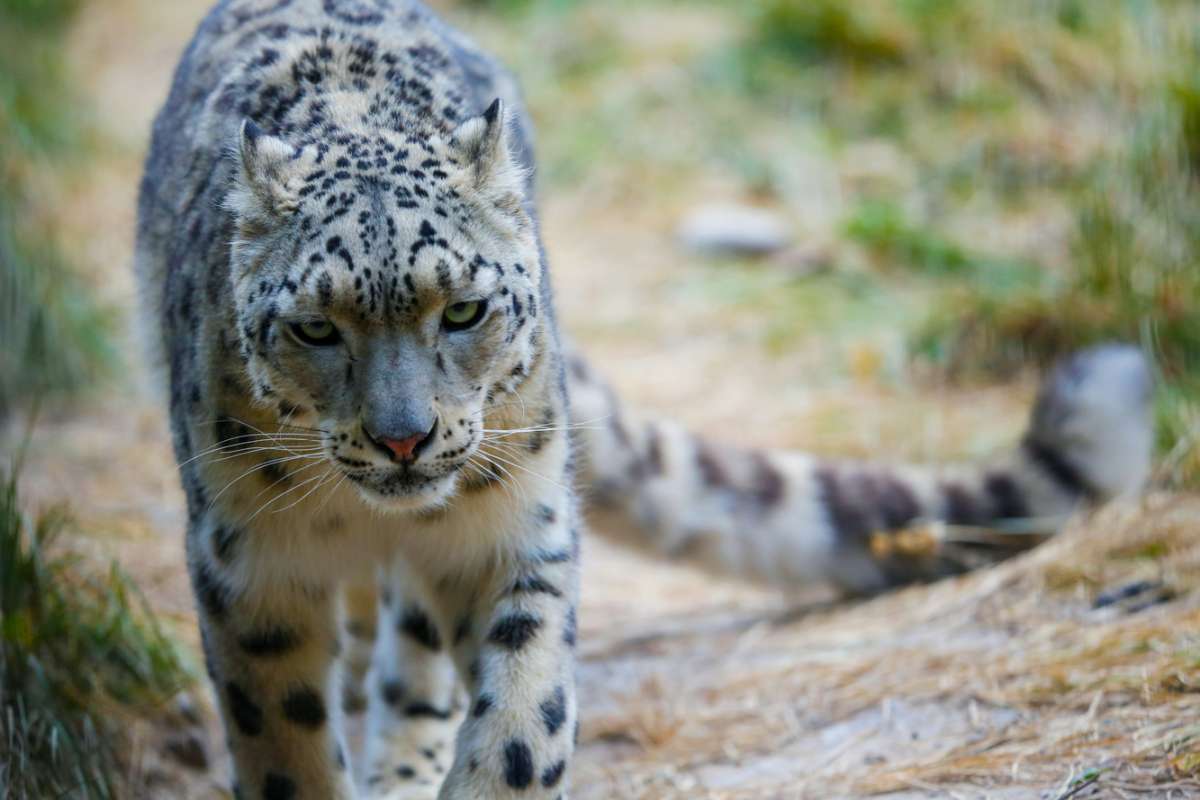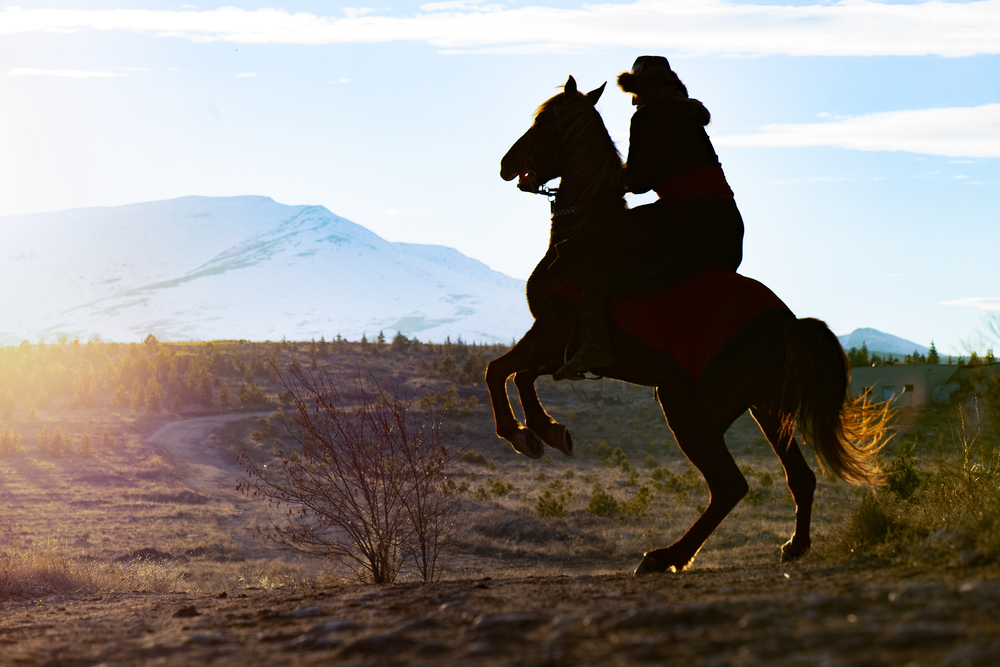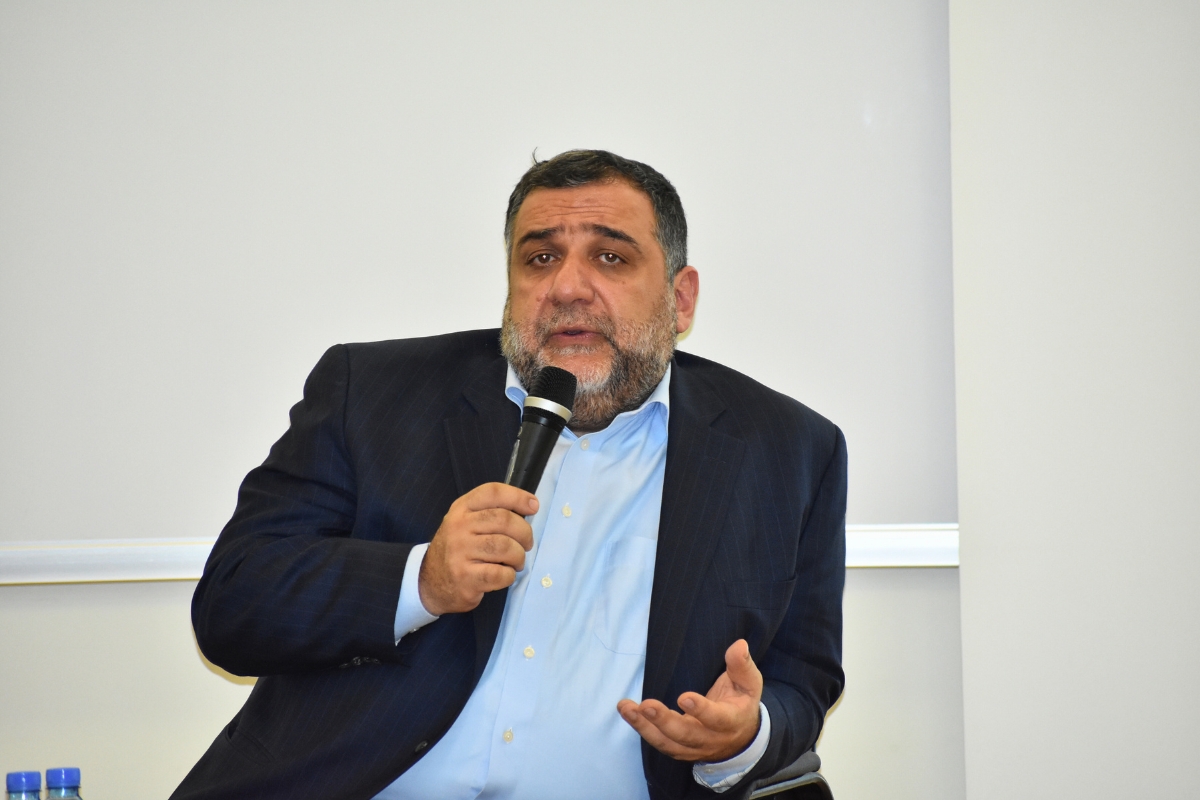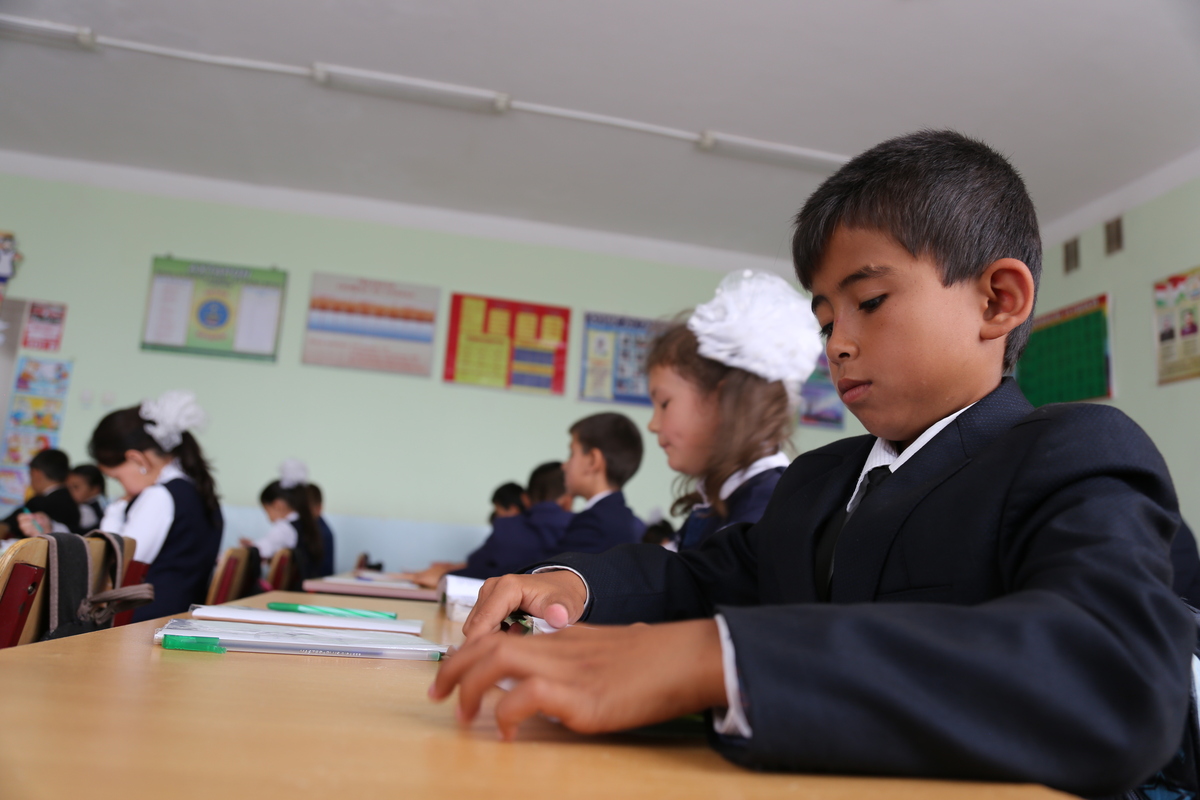- Home
- Snow Leopards: How a Symbol of Kazakhstan Turned into a Vulnerable Species
9 June 2023
Snow Leopards: How a Symbol of Kazakhstan Turned into a Vulnerable Species
Snow leopards are an important symbol in Kazakhstan, and now vital steps are being taken to save them, including the conservation of their habitats, a nature reserve, and a rehabilitation centre.

Image: photos_adil/Shutterstock
In December 2022, footage of a snow leopard standing in the road, unbothered by a huge truck behind him, looking straight into the camera as if waiting for something, went viral in Kazakhstan. Social media users pointed out that such odd behaviour of an animal, nicknamed “ghost of the mountains” for its solitary and shy behavior, is alarming and may point to health issues. A week later, Almaty Zoo found and rescued that snow leopard. However, soon after the animal arrived at the zoo, it died. After performing the autopsy, veterinarians found a plastic bag inside its stomach. This unfortunate accident is just one of many threats putting snow leopards' lives at risk.
According to the WWF, the reasons for decreasing number of snow leopards in the world are “habitat loss and fragmentation, climate change, human-wildlife conflict, illegal wildlife trade.” Out of 4000 snow leopards worldwide, 140-180 reside in Kazakhstan. In 1986 snow leopards were listed as endangered on the IUCN Red List. However, in 2017 their status was changed to vulnerable and remains such today. Although this is a worldwide phenomenon, and the snow leopard is not the only animal that faces a high risk of extinction, the existence of this wild animal is of major importance for Kazakhstan.
For years, this creature was a symbol of the country, especially Kazakhstan’s biggest city, Almaty, in which snow leopards still reside in the mountains today. For example, the portrayal of the snow leopard is used in the coat of arms of Almaty City. The design shows a snow leopard holding an apple tree branch with eight flowers representing the city’s eight districts, with mountains behind and traditional Kazakh ornaments around. This graceful creature has always been considered an integral part of the city’s wildlife. Even when recently, a mural with a snow leopard was repainted by Coca-Cola into a banner with a girl in a traditional Kazakh dress promoting the beverage, it caused an outrage. The public demanded that the snow leopard mural be painted back. Coca-Cola issued an apology and promised that they would revive the snow leopard mural.
Yet with all the love that people seem to have for the snow leopard, it doesn’t help if not enough action is taken to save its existence in Kazakhstan. As the WWF states, “support from local communities living in these remote mountain areas” is a big attribute in saving snow leopards. The unfortunate death of a snow leopard because of swallowing trash only points out humans’ careless and irresponsible coexistence in the mountains. In an article by Kazakh media outlet Vlast.kz titled Tracks of Snow Leopards, one of the employees of the Institute of Zoology explains that many people climb high in the mountains, partying and littering, during the season when snow leopards come down (December to March), which scares off the leopards. This adds to the difficulties snow leopards already face with hunting. As they further explain in the article, hunting can even be dangerous for this skillful predator because farmers may “avenge the killing of sheep and cows by deliberately killing snow leopards.”
Poaching is another gruesome act responsible for the extermination of snow leopards. But, luckily, the laws regarding it are getting stricter in Kazakhstan. Nowadays, poaching results in facing seven to nine years in prison, whereas before, the punishment could be limited to paying a fine. The government also plans to start compensating farmers whose livestock fall prey to snow leopards to stop them from avenging the animal.
Unfortunately, that is not the only problem that puts the existence of snow leopards in Kazakhstan at high risk. By selling land in the mountains to build new elite cottages, penthouses, or ski resorts and the urbanization of land there, the government puts the city’s wildlife in danger just to bring in more tourists and potential revenue. Luckily, some activists refuse to let this get further out of control. Last November, ecoactivists made an appeal to save the Almaty mountains and stop akimat (Kazakh: mayor’s office) from allowing any further buildings to be built in the city’s foothills They stated that it not only affects nature and animals in the mountains but also increases the risk of landslides.
Image: Robert Szymanski/Shutterstock
Lastly, climate change and global warming spare no one. These days there is mounting evidence pointing to its consequences. However, experts say that it is hard to predict how climate change will affect the snow leopards' habitat. Because snow leopards are quite adaptable to climate changes, human-leopard interaction seems to remain the biggest problem.
With a variety of factors affecting snow leopards' lives and future, some positive steps are being taken to protect them. For example, the partnership of Kazakhstan’s government with the United Nations Development Programme (UNDP) and the Global Environment Facility (GEF) in 2018 to preserve snow leopards in the country. Another important step is Kazakhstan’s involvement in Global Snow Leopard and Ecosystem Protection Program (GSLEP), along with the other 11 countries where snow leopards reside, to focus on conserving snow leopards and their ecosystems. Partnering with such organizations and programs shows the country’s active position toward preserving its symbol and possibly ensuring the government is held accountable.
One local initiative is the Almaty Nature Reserve, which focuses on preserving and protecting Kazakhstan’s wildlife and landscape. Snow leopards are one of “200 birds, about 40 species of mammals, a few reptiles and thousands of insects” living under the Nature Reserve’s protection. It was reported in 2021 that the Snow Leopard Foundation plans to open a rehabilitation center for snow leopards in Kazakhstan that will provide medical treatment and assistance for snow leopards injured during hunting or at the hands of poachers. According to the UN, a crucial part of preserving snow leopards and increasing their population will be implementing IVF to help with breeding of the wild animals. With the assistance of the UN in training rangers of the Ile-Alatau National Park and providing special equipment, the foundation plans to make this project international by uniting with other countries where snow leopards reside, hopefully creating a joint effort of all 12 countries.
A positive change was seen during the COVID-19 lockdown in 2020 when snow leopards started visiting places usually full of people due to residents staying at home. Instances of camera traps catching snow leopards in Kazakhstan’s mountains on video prove that initiatives to protect them are becoming effective. Hopefully, with time people in Kazakhstan will become aware of the consequences of their actions and the importance of individual responsibility to preserve snow leopards.
Read this next






